Using AI and Cursor to localize Xcode String Catalogs
Jun 8, 2025 ·
Xcode String Catalogs are great for localization, but make it harder to add new languages compared to the old .strings files. Let’s see how to export & import String catalog languages, and how to use Cursor to add support for new languages with AI.
Creating a String Catalog
You can localize apps, SDKs, or any kind of target in Xcode, by adding a String Catalog to the target:
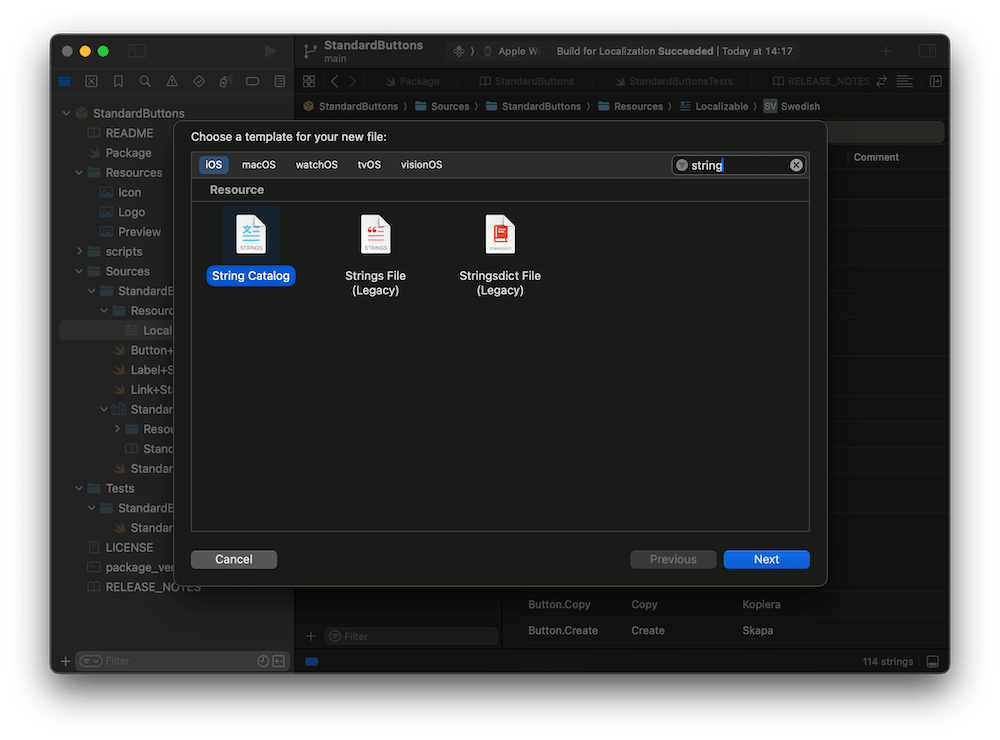
String Catalogs are amazing, and are very easy to localize. You can even vary translations based on devices, for instance to say “click” instead of “tap” on macOS.
You can easily add more languages to your String Catalog by tapping the bottom plus button and selecting a new language from the extensive list of supported languages.
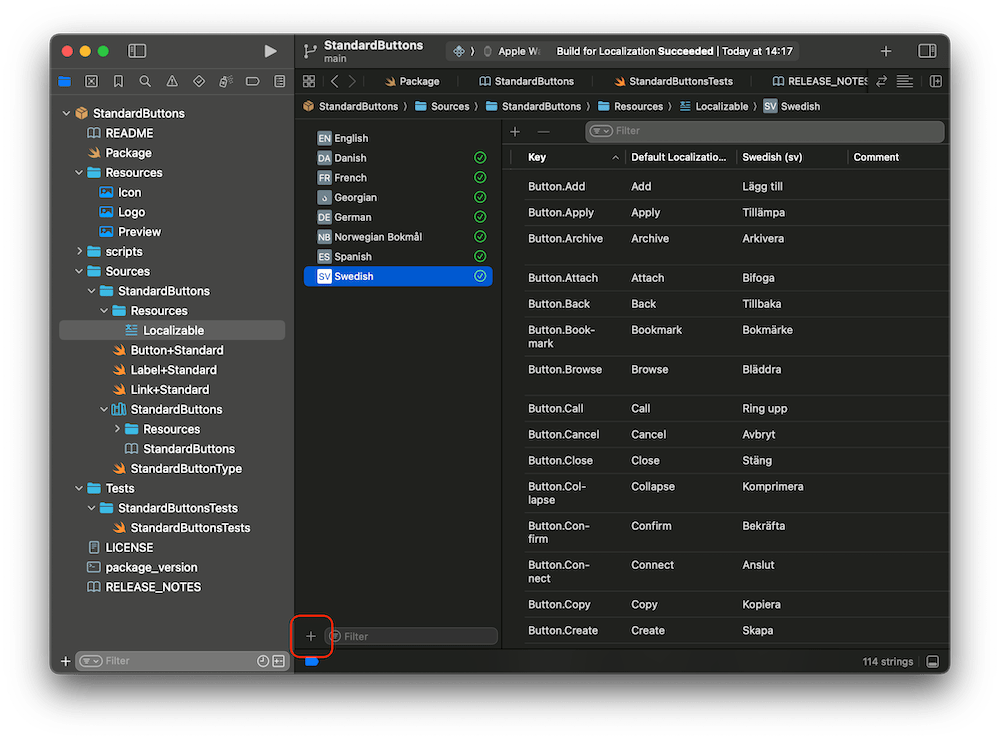
This is where I faced some problems with how to best handle new languages. In the image below, I have just added Norwegian Bokmål to an SDK, with all Norwegian keys marked as NEW:

If I had used the old .strings approach, I would have localized the separate Norwegian strings file by sending it to a translator or passing it to an AI-based translator.
This is not as easy with String Catalogs, where languages are added to a single XML file. Uploading the entire file to an AI service doesn’t scale, and degrades over time, the more languages we add.
We can handle separate languages easier by exporting languages from the String Catalog, translate the separate files, then import the translated files back into the String Catalog.
Let’s take a look at how to do this, and how we can use Cursor to translate new, untranslated files.
Exporting Languages from a String Catalog
To export a language from a String Catalog, select the app or package from the sidebar, then select Product > Export Localizations... from the main menu.

You will get a dialog, where you can select which languages to export and where to export them:
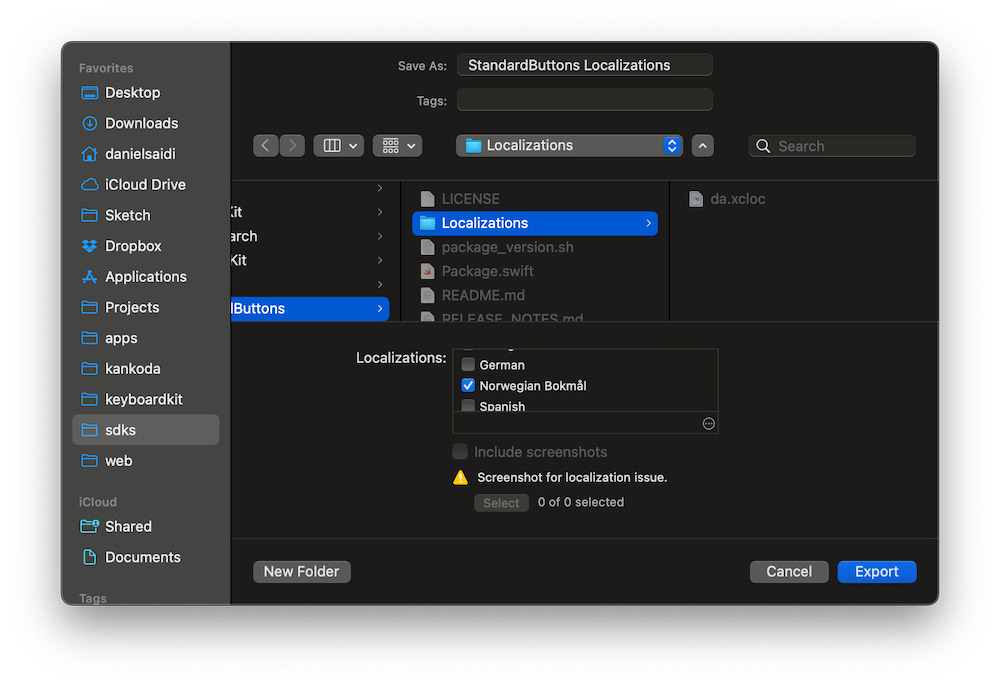
Each language will be exported to a separate .xcloc folder, which contains a few folders and files, including an .xliff file with the language-specific localizations.
Using Cursor to translate XLIFF files
We can now open the export folder with Cursor and select the .xliff file we want to translate. In our case, the Norwegian Bokmål (nb) file is nb.xcloc/Localized Contents/nb.xliff.
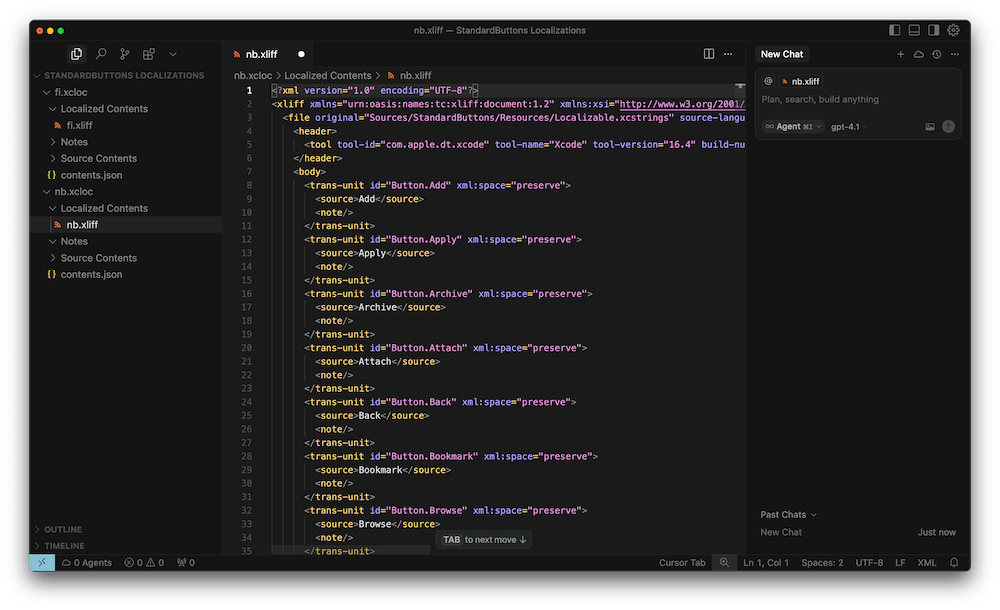
In the image above, you can see that the Norwegian Bokmål file only contains original English texts.
I first tried to ask Cursor to translate the entire .xcloc structure, but this was too complicated for it. I therefore selected the XLIFF file and asked Cursor to translate the body tag, and output the result:
Translate the selected .xliff file’s body tag to the target-language. For each text, keep the source tag and add a target tag with a
state="translated"attribute and the translation as body. Output the result as plain text.
This will make Cursor output the result as plain text, instead of asking what to do with the result. I found this good in my case, since Cursor wasn’t able to apply the result directly to the .xliff file:
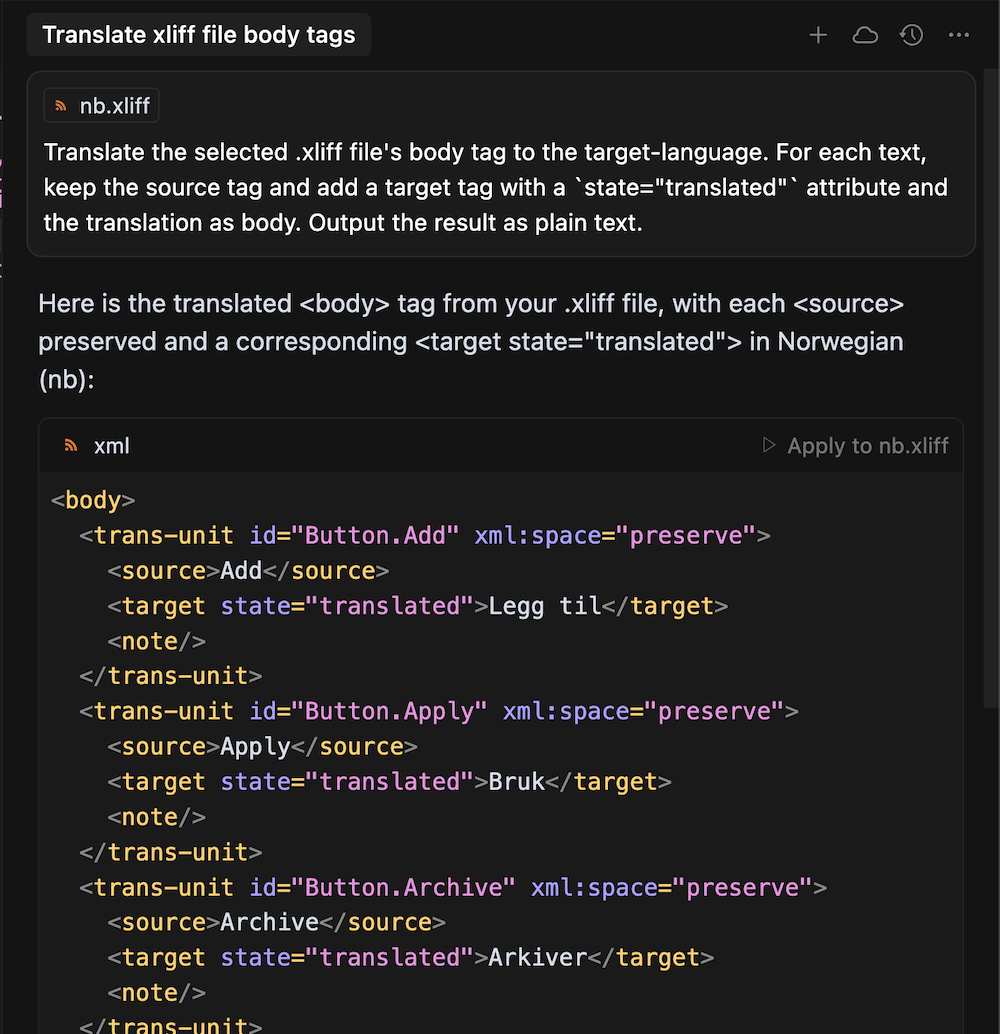
Once the operation has completed, just copy the output and replace the body tag in the original file:
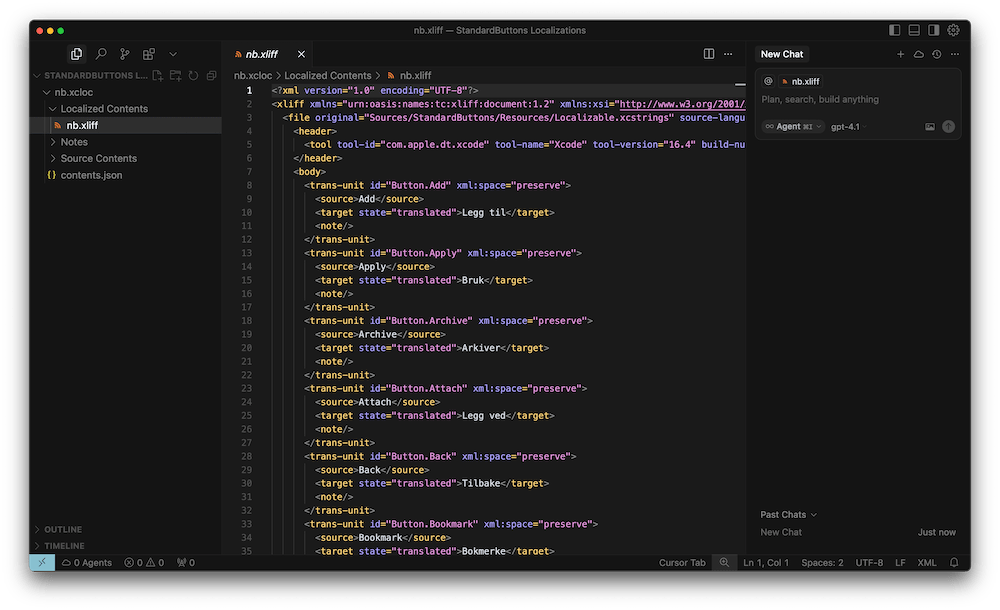
Finally save your changes. We are now ready to import our Norwegian translation back into Xcode.
Importing Languages into a String Catalog
We can use Xcode to import the Norwegian translations back into our String Catalog. Select the app or package from the sidebar, then pick Product > Import Localizations... from the main menu.
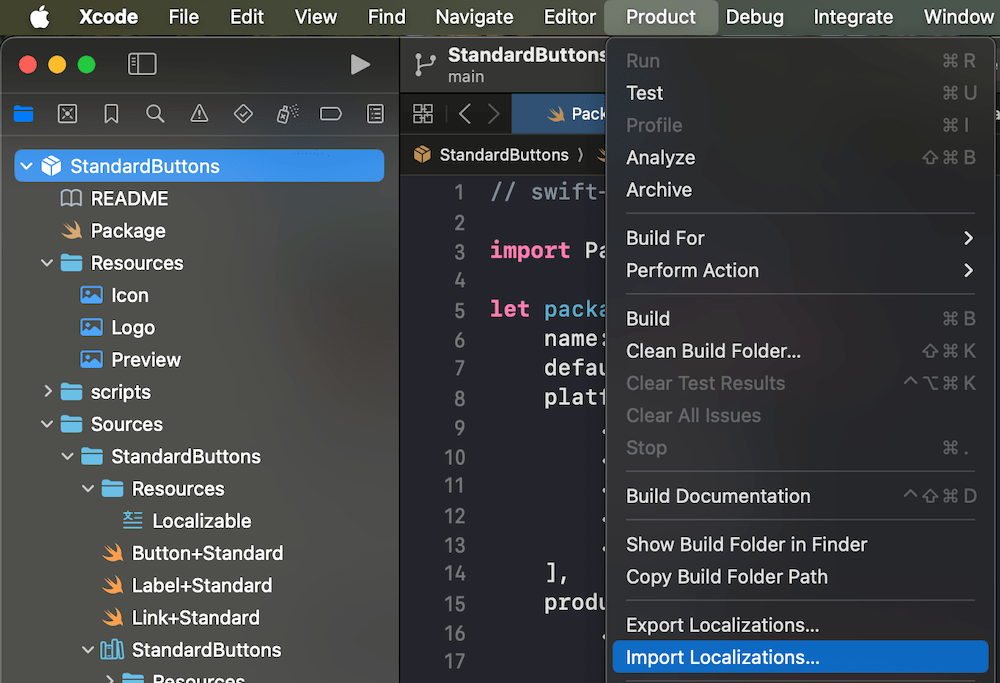
You will be prompted about which file to import. Select the nb.xcloc you previously exported. If it’s correctly formatted, our Norwegian translations will be imported:
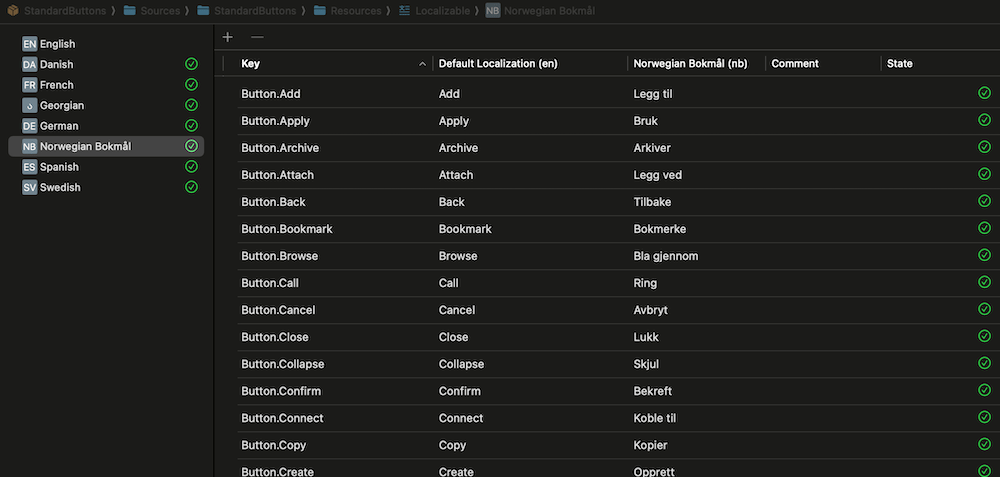
That’s it! We have used Xcodes export & import together with Cursor to translate an entire app to a new language. We can probably automate it further. Please comment if you have any ideas on this.
Conclusion
Xcode String Catalogs are amazing tools for working with localized content, but they’re a little tricky compared to the old .strings files when it comes to adding support for new languages.
I hope that this post has clarified how to export & import languages with Xcode and given you some ideas on how to quickly translate an entire app to a new language.
While this post uses Cursor to localize, a skilled human will of course give you a much better result.
Discussions & More
If you found this interesting, please share your thoughts on Bluesky and Mastodon. Make sure to follow to be notified when new content is published.